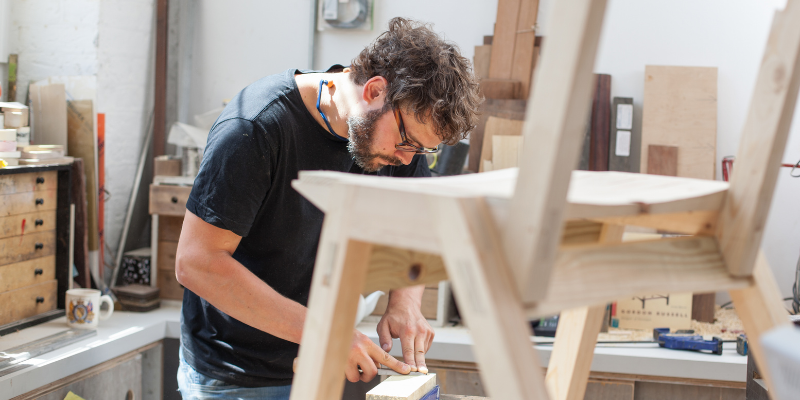Bringing a new product to market is an exciting step for any business. But how can you protect your unique design and deter look-alike products?
Registered intellectual property (IP) rights protect your ideas and can give you the exclusive right to sell, promote or develop a product.
Design rights protect the overall visual appearance of a product, including its shape, colour, and pattern. This protection ensures the unique aesthetic of your product or its packaging remains exclusive to your business.
Registered design rights are published on a publicly accessible database. This visibility reinforces your claim to the design, which can deter copycats.
Registering your design early can be a good investment as it may prevent legal issues in the future.
To be eligible for a design right, a product must have physical and tangible form, be manufactured or handmade, and be produced on a commercial scale.
Tip: Before applying for a design right it is important to keep your design a secret! To have the best chance of protecting your design, it should not be publicly disclosed – even on social media – until after you have filed a design application.
If you need to talk to others about your idea, get them to sign a non-disclosure agreement (NDA).
Registration and certification – a two-step process for full protection
Registering your design is an important first step to show you’re safeguarding your product.
Starting at $200, a registered design gives you:
- The exclusive right to use your design and authorise others to use it in Australia for up to 10 years (renewal at 5 years)
- A right that can grow in value as a business asset, and can be sold or licensed within Australia
- The ability to apply for the same design overseas (within six months of your Australian application)
- The ability to certify your design.
Unlike other intellectual property (IP) rights, a registered design is not an enforceable right.
While registration can deter copycats by publicly identifying your design, you need to certify your design if you want to take legal action to stop others using it without authorisation.
Certification is optional and is only possible after your design has been registered.
Certifying your design costs an additional $500. This certification can be requested at any point after registration, and provides:
- A continuation of all the rights granted at registration
- The legal right to enforce your design and take action against others who use it without your permission.
You may choose to register your design to strengthen your legal position by securing your right while you prepare for the certification process. During this time you could carry out market testing, prepare for a product launch, or source additional funding.
For more information, check out What To Consider Before Applying For A Design Right.
Other IP protection
A design right works well as part of an overall IP strategy. Many businesses choose to use multiple IP rights to protect their product.
For example:
- Trade marks can be used to protect a logo, phrase, word, letter, picture, aspect of packaging and more – learn more on our Trade Marks page.
- Patents protect new inventions – learn more on our Patents page.
Tips on defending your IP rights
Once you have a design right it is good practice to have a strategy to follow in protecting your product:
- Monitor the marketplace and IP rights databases for lookalike products.
- List your IP rights with e-commerce platforms before anyone tries to sell counterfeit goods. Most e-commerce platforms have a take-down mechanism for responding to IP complaints, including counterfeit and replica goods or other unauthorised items.
- If someone is importing infringing goods, you can lodge a notice of objection with the Australian Border Force to temporarily seize them. See How to import intellectual property.
- For international cases, work with lawyers in the relevant country, international IP protection varies from country to country and can be complex. We recommend you Get Professional Assistance With Your IP.
While IP Australia administers the IP system, we do not enforce registered IP rights. As the owner of the IP right, you need to monitor the marketplace and defend your rights.
For information about someone using your IP without your permission visit Someone Is Using My IP.
You can also use our new pilot tool IP First Response tool to find out more about what options you might have if you believe your IP rights are being infringed.
For help with online infringement, check out the World Intellectual Property Organization's (WIPO) Arbitration and Mediation Center. It offers mediation, arbitration, and expert determination to enable parties to settle their domestic or cross-border commercial disputes.

